Some time ago I was asked to help repair some old doors, partially destroyed in the cleaning process. They came from an old apartment that the owner wanted to renovate and save the tall wooden doors typical of buildings built at the turn of the last century and in the inter-war period. He was obviously fond of the place, and the fact that the doors looked compromised was visibly affecting him. What had happened? To remove the old coats of paint from the doors, he called in a firm to sandblast them clean. Unfortunately, the people who did the sandblasting did not know much about sandblasting wood and as a result, the doors ended up with very structured wood, pierced in very thin areas and partially destroyed on the edges and corners. In spite of the result, the owner still hoped to be able to salvage them, this time proposing to do everything himself.

Sand-blasting wood is different from sand-blasting metal
Although wood sandblasting I've spoken about this on other occasions, this gives me the opportunity to highlight the differences between sandblasting metal and wood. This does not mean that it is a simple operation that you can do yourself. You still need to call in specialists because it involves special equipment and risks during the process. But so you know what to ask so that you are told from the start whether or not they can do the job.
Originally, sandblasting was used to clean metal with sand. This is the definition of the term, if you're curious enough to look it up in the DEX. Gradually, the process was extended to other materials, and other materials with different grain sizes and hardnesses started to be used in addition to sand. Wood is a different material from metal, both in its hardness and in the fact that it is amorphous, not uniform in composition. Whereas in metal, no matter where on the surface, the strength of the material will be the same, in wood it will be different. On a door, for example, there will be late wood and early wood or knot-zone, each having a different strength. When sanding wood, you can deal with hardwood and softwood - that classic division into hardwood (hardwood, as it is called in English) and softwood (softwood) - but also with differences in hardness between species of the same class.
Under these conditions, the material with which the paint is removed and the pressure applied are very important. Depending on these you will achieve either just paint removal and a clean and smooth wood surface, or paint removal and structuring of the wood so that it looks like a weathered wood. The choice has to be made very carefully, especially with old wood or objects. For example, sandblasting is not used in the restoration of old wooden objects of historical value. The many variables make the process difficult to control, so it is better not to risk it. It can only be used when refurbishing old doors or furniture.
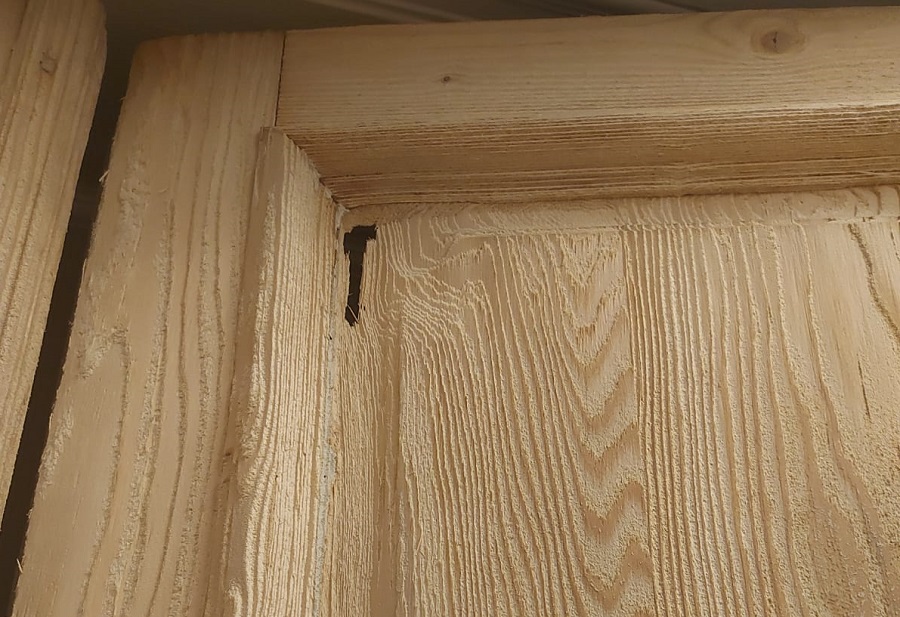
Abrasive materials used in blasting
Initially used sand for blasting, hence the name (sable = sand in French). But sand also comes in many varieties, and because of this there are different classifications according to hardness or grain size. In terms of grain size, there is sand ranging from 30 to 220 grains. For wood only the 30 to 80 is used. In terms of hardness there is another classification. Very often used Mohs scale used mainly for minerals, based on their ability to scratch or be scratched. Talc, a material that can be scratched with a fingernail, has a Mohs hardness of 1.3, while diamond has 120.6. Quartz is somewhere in the middle at 72.2. Materials used for wood should not exceed 10 on the Mohs scale.
Other abrasives are also used. For wood, the most recommended is sodium bicarbonate. It is softer, but its crystals are abrasive enough to clean the wood and leave it smooth. There are also specialists who say it is too soft and recommend it more for mold removal or plastic cleaning, but the vast majority of them agree that it is the best material for cleaning wood. Plastic, ceramic or glass pellets, crushed pumice, crushed walnut shells or crushed corn kernels can also be used for wood. All of these materials have low hardness so they do not damage the wood. For example, walnut shells and corn have a hardness between 4.5 and 5 Mohs, plastic pellets used for splitting wood between 3 and 4 Mohs, and pumice stone between 6 and 7 Mohs.
Whatever material is used, it is important that it does not warp or dislocate the wood fiber. Sandblasting should not be used for cleaning where there is a risk of damage, as in the case of old, weathered wood or very valuable old objects. If structuring of the wood is not desired, it is better to clean the wood gradually, in several passes, so that the wood remains intact in the end.
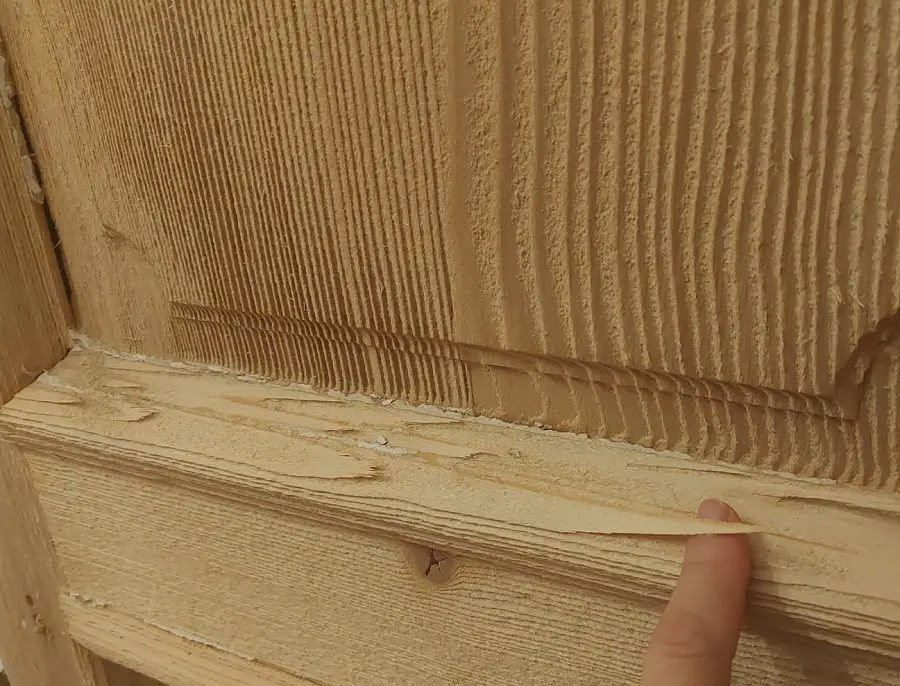
Why were the doors partially damaged by sandblasting? What else can be done?
In the situation presented, the negative result was also amplified by the fact that the doors were made of resinous wood. Much softer than oak or even northern pine, the spruce wood (presumably) gave way much more quickly, its structure being much more evident. Unfortunately, the force of the sandblasting pulled out knots in some cases, ground the edges of the doors at the corners, sometimes even split large splinters of wood. Fortunately, not all doors were equally badly damaged.
The doors will now undergo a laborious restoration process. The holes and gaps will first be filled in and the wood filled in where large chunks have disappeared. Small defects will be covered with putty made from resinous wood dust and aracite. Loose parts will be glued with aracite. Then pTo reduce the difference between late and early wood after sanding, the doors will be sanded all along the grain, first roughly and then with finer paper. Only then can they be stained and varnished so that the grain of the wood is visible, as the owner intended from the beginning.
I'm sure the doors will look fine in the end. Their owner is far too determined to save them.
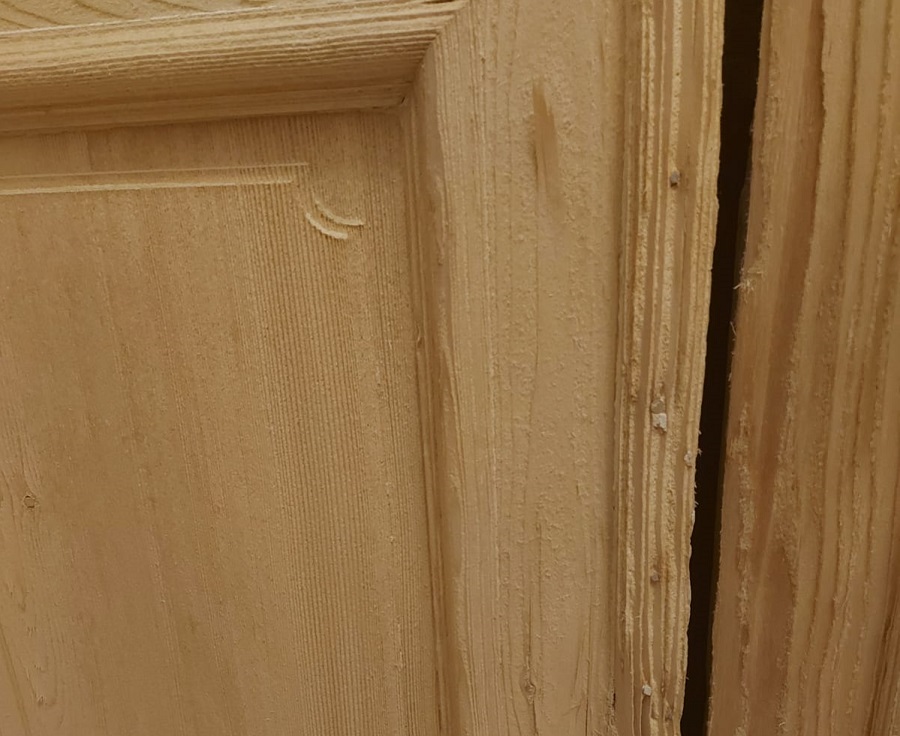
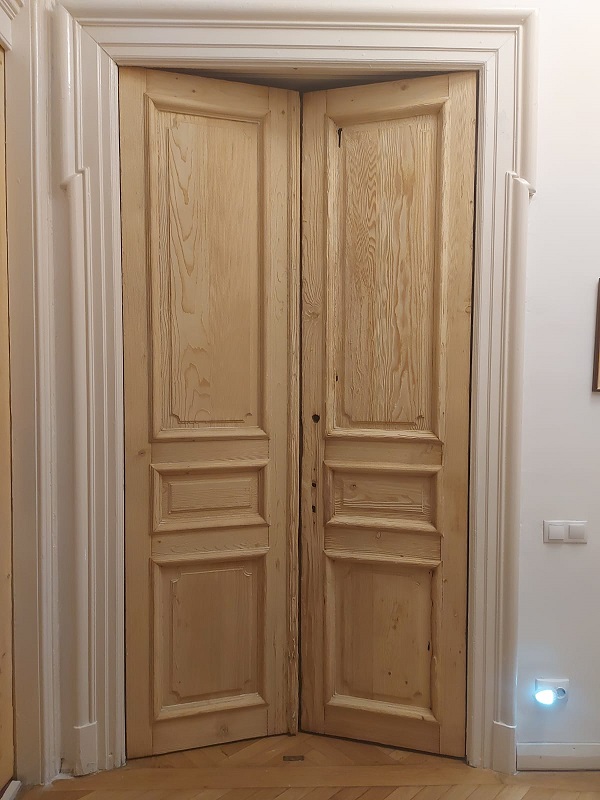

























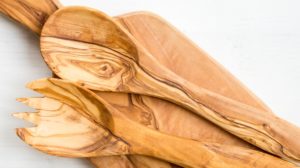










Add comment